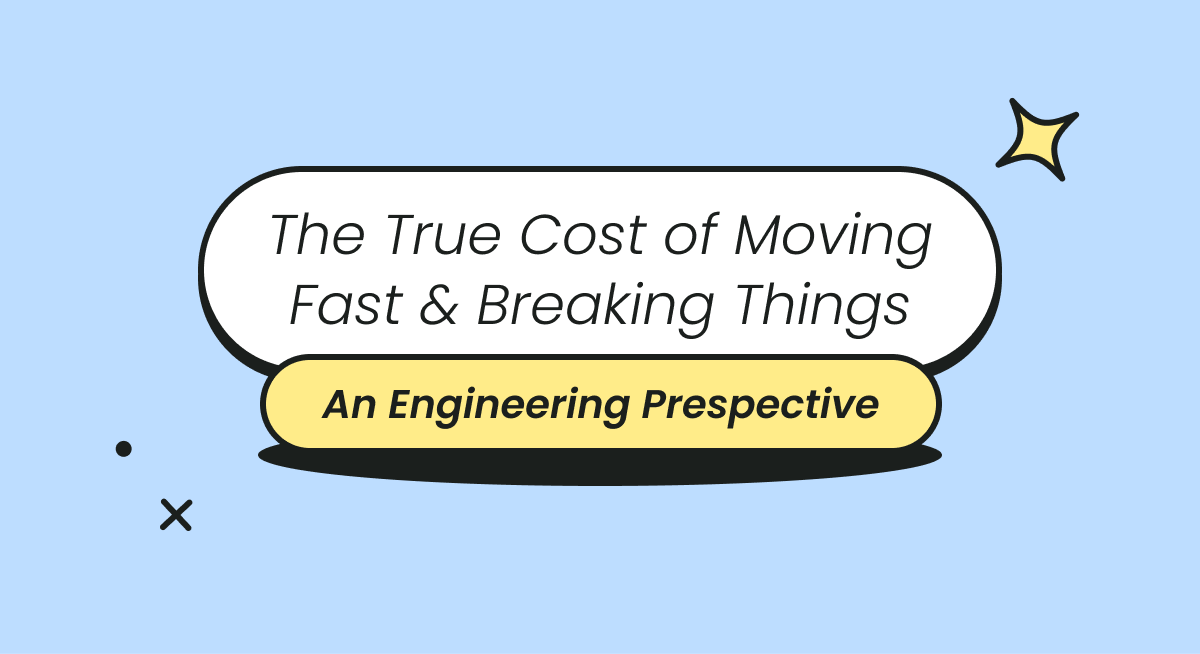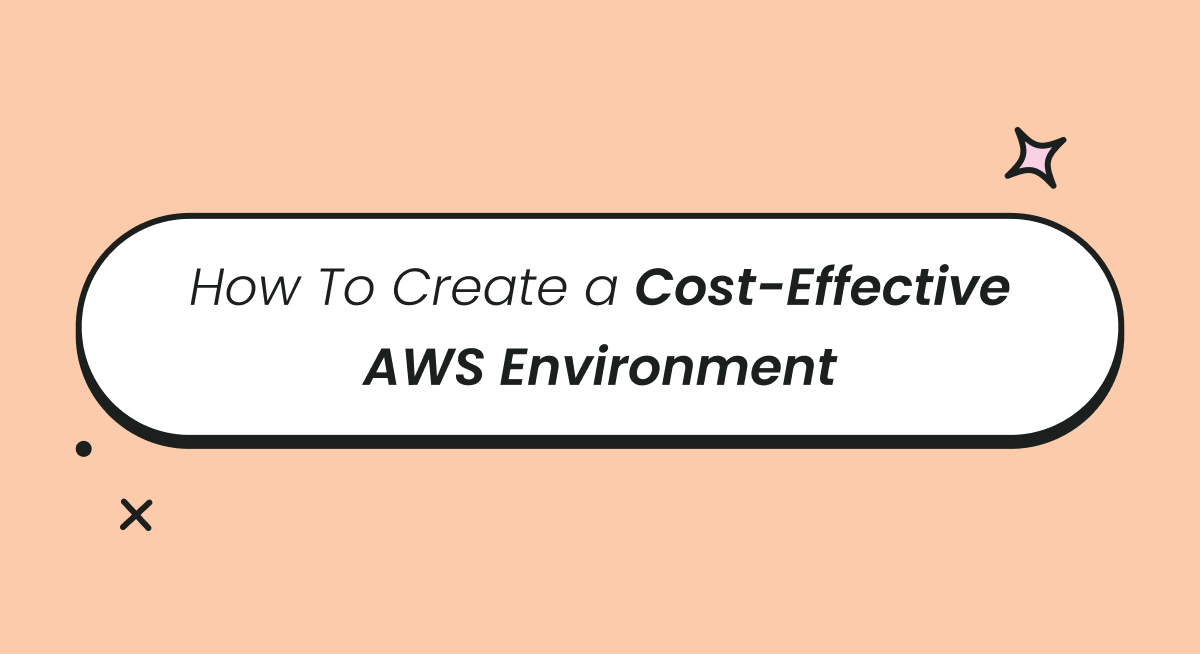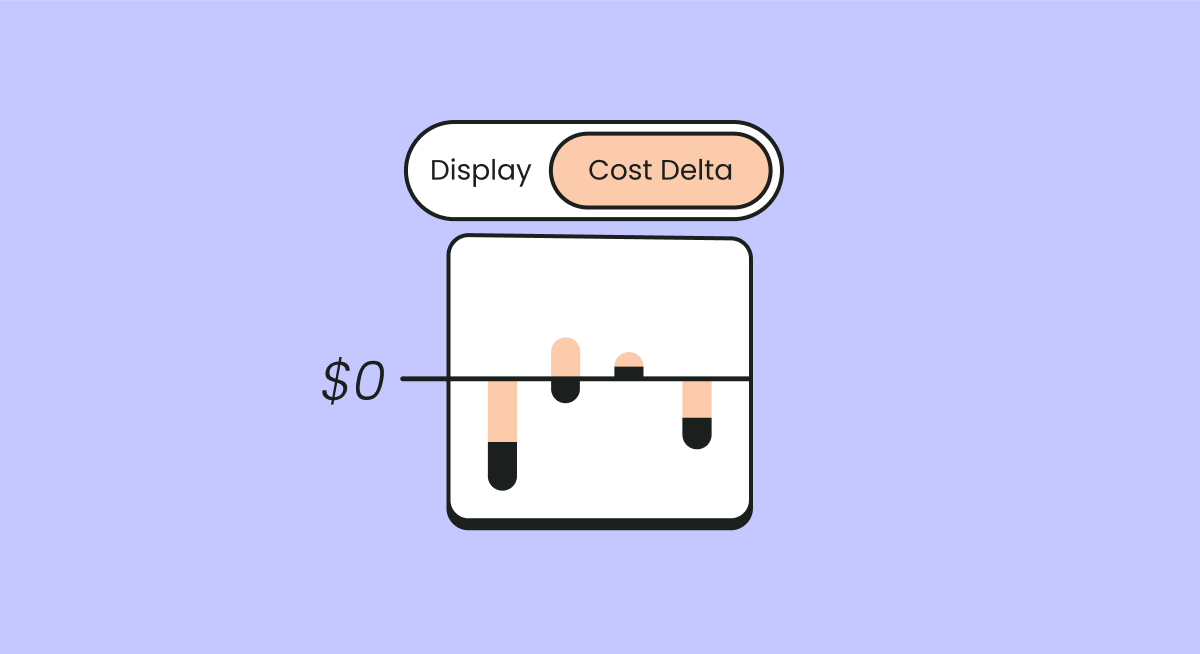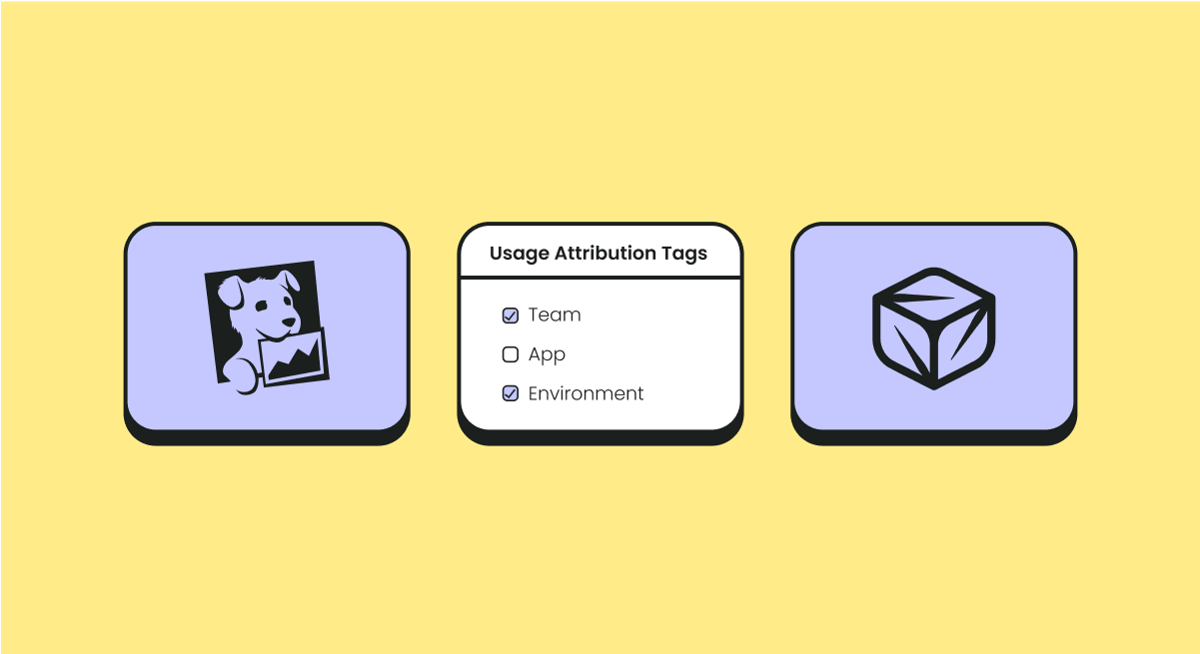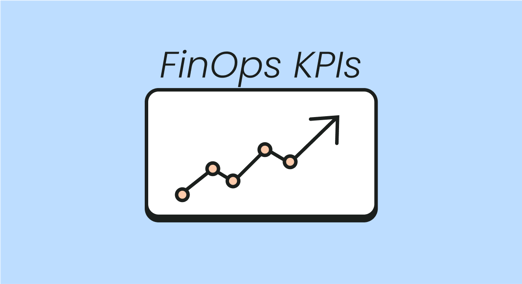
What Is FinOps?
FinOps, short for Financial Operations, is a cloud financial management discipline to optimize cloud spending while maximizing business value. It brings together technology, finance, and operations teams to collaborate on managing cloud costs, ensuring that every dollar spent aligns with organizational goals.
FinOps is about creating a culture of accountability where teams take ownership of their cloud usage and its financial implications. It combines real-time data, cross-functional collaboration, and continuous optimization to enable smarter decision-making in cloud environments. Unlike traditional IT financial management, FinOps focuses on the dynamic and variable nature of cloud costs.
Related Content:
- Read our guide to AWS FinOps
- Read our guide to FinOps Principles
Why Is Tracking FinOps KPIs Important?
Tracking FinOps key performance indicators is critical for maintaining control over cloud expenditures and optimizing cloud resource utilization. These KPIs provide a clear, measurable framework for managing costs, driving efficiency, and achieving financial predictability in cloud operations:
- Smarter spending: Monitoring KPIs such as cloud unit costs enables organizations to pinpoint areas of overspending or inefficiencies. This insight helps organizations rightsize their cloud infrastructure, reallocating resources where they deliver the most value or scaling back underutilized assets.
- Resource optimization: FinOps KPIs help identify idle or underutilized resources, ensuring funds are directed toward projects with the highest impact. By actively tracking these metrics, organizations can avoid wasteful expenditures and focus on maximizing their return on cloud investments.
- Fostering accountability: Clear KPIs promote transparency and encourage teams to take responsibility for their cloud usage and associated costs. This shared accountability improves collaboration across departments, aligning technology usage with business objectives and financial goals.
- Data-driven decisions: Relying on KPIs rather than intuition allows organizations to prioritize investments more effectively. This data-driven approach enables evaluating cost-saving initiatives, measuring their success, and planning for future cloud strategies with confidence.
- Proactive risk management: Tracking KPIs also acts as an early warning system, alerting organizations to potential cost spikes, inefficiencies, or vulnerabilities. This allows for swift corrective actions, minimizing disruptions and financial risks.
Top FinOps KPIs for Effective Cloud Cost Management
To effectively manage cloud costs, various FinOps KPIs must be thoroughly monitored. These KPIs serve as benchmarks for evaluating how well resources are utilized and where improvements are needed.
1. Cloud Spend Allocation Rate
The cloud spend allocation rate determines how effectively costs are distributed across various organizational units and projects. Analyzing this KPI helps identify which departments consume the most cloud resources, providing insights into potential inefficiencies or imbalances. By understanding allocation rates, companies can reallocate resources to maximize productivity.
A high spend allocation rate indicates a well-structured budget approach, linking cloud expenses to revenue-generating activities. Monitoring this KPI helps avoid resource waste and overspending. Accurately allocating cloud costs ensures each business unit understands the financial implications of their cloud usage.
2. Resource Utilization Rate
The resource utilization rate measures the efficient use of allocated cloud resources. This KPI focuses on ensuring that computing assets, storage, and network resources align with actual demand, avoiding under or over-provisioning. Effective monitoring of utilization rates enables organizations to identify unused or idle resources, thus enabling operational and cost efficiency.
A good resource utilization strategy directly impacts cloud expenditure. Optimizing utilization eliminates waste and results in substantial cost savings, freeing up budget space for innovation and growth. Maintaining high utilization rates also ensures that organizations leverage all available resources, improving their operational resilience.
3. Percentage of Cloud Waste
Cloud waste refers to resources that are paid for but not actively used or required by the organization, representing a significant drain on financial resources. Monitoring the percentage of cloud waste is crucial in recognizing areas where resources can be adjusted or terminated to reduce unnecessary expenditure. By minimizing cloud waste, companies can better allocate resources across projects.
Eliminating cloud waste requires rigorous analysis and continuous monitoring of usage patterns. Implementing strategies such as rightsizing and automated scaling can significantly cut waste percentages, reducing overall cloud spend. Addressing cloud waste also reduces the environmental impact of computing operations.
4. Cost per Customer
Cost per customer measures the expenses incurred from cloud operations per individual customer, providing a direct view of financial efficiency. This KPI is essential for evaluating whether cloud expenditures align with customer revenue, helping organizations maintain competitive pricing while ensuring profitability.
Monitoring this metric allows organizations to ensure their cloud investment decisions are conducive to business growth. Reducing cost per customer is vital for sustaining competitive advantage. By optimizing infrastructure and resource allocation, companies can lower these costs, maximizing profit margins.
5. Cloud Cost as a Percentage of Revenue
Cloud cost as a percentage of revenue establishes how much of the company’s revenue is spent on cloud operations, reflecting the balance between technological investment and financial health. A lower percentage indicates that the business is effectively leveraging technology to generate revenue, without overly burdening financial resources allocated to cloud spending.
Monitoring this KPI provides insights into the cloud strategy's effectiveness. A tightly controlled cloud budget that scales with revenue growth points to a balance between innovation and cost management. This metric is critical for strategic planning, budgeting, and aligning cloud investments with long-term business objectives, ensuring sustainable financial performance.
6. Unit Cost Measurement
The unit cost measurement analyzes the cost associated with delivering a particular service unit, such as compute hour or storage byte. This KPI supports detailed consumption analysis, enabling organizations to optimize service delivery costs based on consumption patterns and demand variation, ensuring efficient operation.
By focusing on unit cost, organizations can identify areas for cost optimization, which is imperative for cloud service profitability. Implementing cost reduction without impacting service quality or performance improves competitiveness. Keeping unit costs low while maintaining service excellence aids in customer retention.
7. Reserved Instance (RI) Utilization
RI utilization examines how effectively an organization uses pre-purchased cloud resources against its planned commitments. This KPI indicates whether reserved instances align with consumption patterns, illuminating the balance between reserved resource pricing and on-demand costs. Maximizing RI utilization helps capitalize on cost-saving opportunities.
Effective RI management showcases the organization's foresight in resource planning, thus optimizing cloud spend. Monitoring and adjusting RI usage according to evolving needs helps avoid over-commitment or unexpected surges in on-demand costs. Ensuring optimal RI utilization results in sustained financial and operational advantages in cloud environments.
8. Discounted Resources as Percentage of Cloud Spend
Understanding the proportion of cost savings achieved through discounted resources is crucial for measuring a company's success in negotiating and acquiring cost-effective cloud services. This KPI evaluates how well organizations leverage volume discounts, reserved instances, and other financial incentives available from cloud providers.
A higher percentage denotes stronger financial health and strategic procurement competence. Actively employing discounted resources reduces total cloud expenditure, allowing companies to reinvest savings into innovation or other strategic ventures. Efficiently managing discounts contributes to a reduced cloud bill and aligns expenses with broader financial goals.
9. Cloud Spend Variance
Cloud spend variance measures the difference between budgeted and actual cloud spending, providing insight into the effectiveness of financial planning. This KPI alerts organizations to deviations that might indicate inefficiencies or changing requirements, enabling proactive management and strategic adjustments.
Regular monitoring of spend variance ensures that costs are controlled and aligned with expectations, thereby avoiding unexpected financial burdens. Addressing variance issues promptly improves budgetary compliance and optimizes cloud cost management effectively. Reducing surprises in cloud bills promotes financial stability and supports organizational growth.
10. Mean Time to Recovery (MTTR)
MTTR measures the average time taken to recover from a cloud service disruption. This metric indicates the efficiency of incident response and system resilience. A lower MTTR reflects strong reliability and quick recovery capabilities, ensuring uninterrupted operations.
Focusing on MTTR helps identify process improvements and resource requirements that bolster recovery procedures. By minimizing downtime, organizations can maintain service availability, improve customer trust, and protect revenue streams. Strengthening MTTR through planning directly contributes to operational excellence and customer satisfaction.
11. Hourly Cost Average
The hourly cost average measures the average expense incurred per hour for cloud operations. This KPI provides granular insight into spending patterns, enabling organizations to track cost fluctuations over time and identify periods of inefficiency or excessive resource consumption.
Monitoring this metric allows organizations to evaluate how workloads and activities contribute to overall hourly expenses. Anomalies, such as spikes during off-peak hours, can indicate areas for optimization, like adjusting schedules for batch processing or scaling down unused resources.
12. Blend of Purchasing Strategies
The blend of purchasing strategies evaluates how well an organization balances different purchasing models, such as on-demand, reserved instances (RIs), and spot instances. This KPI reflects the flexibility and cost-efficiency of procurement decisions, ensuring optimal resource availability while controlling expenditures.
A strategic blend incorporates long-term commitments like RIs for predictable workloads and spot instances for transient or fault-tolerant tasks. Monitoring this KPI helps organizations avoid over-reliance on expensive on-demand pricing, maximizing cost savings while maintaining operational agility.
13. Time to Address Cost Anomalies
The time to address cost anomalies measures how quickly an organization identifies and resolves unexpected spikes or deviations in cloud spending. This KPI is critical for maintaining financial control and avoiding budget overruns caused by misconfigured resources, inefficient usage, or unforeseen demands.
Tracking this metric ensures that cost anomalies are swiftly escalated and addressed, minimizing their financial impact. Organizations can leverage automation tools to detect irregularities in real time and provide actionable insights to the appropriate teams for resolution.
14. Forecasting Accuracy
Forecasting accuracy assesses the precision of an organization’s cloud cost predictions compared to actual spending. This KPI indicates the effectiveness of financial planning and resource estimation, providing a benchmark for refining budgeting processes.
High forecasting accuracy enables organizations to allocate resources efficiently, avoid over-provisioning, and minimize financial risks associated with unforeseen expenses. Continuous monitoring of this KPI helps identify discrepancies in planning assumptions and adjust models for improved predictions. Achieving reliable forecasts requires leveraging historical data, usage trends, and workload patterns to anticipate future needs.
6 Strategies for Tracking and Maximizing FinOps KPIs
Effective tracking and optimization of FinOps KPIs require targeted strategies to simplify processes and improve cloud cost management outcomes.
1. Automate Data Collection and Reporting
Automating data collection and reporting improves accuracy and timeliness, essential for FinOps metric tracking. This strategy minimizes manual errors and ensures a continuous flow of insights into cloud resource utilization and financial performance. Automated systems help quickly identify trends and anomalies, supporting proactive resource management.
Deploying automation tools for data analysis accelerates the response to financial and operational changes. By enabling real-time updates and comprehensive reporting, organizations gain improved visibility into cloud expenses. Accurate and up-to-date reporting simplifies decision-making processes, aiding in the immediate identification and resolution of issues.
2. Develop Interactive Dashboards for Visibility
Interactive dashboards augment transparency and understanding of cloud financials by aggregating KPIs into a single, accessible interface. Dashboards provide dynamic views of data, enabling stakeholders to drill down into metrics for detailed analyses. This approach ensures stakeholders have crucial insights at their fingertips for better strategic planning.
By improving visibility, dashboards foster informed decision-making and incentivize stakeholders to engage in optimizing cloud spend. They encourage continuous monitoring, allowing teams to react swiftly to changes or deviations. Dashboards are essential tools for analyzing trends over time, supporting the accountability and financial alignment of cloud investments.
3. Implement Proper Resource Tagging
Proper resource tagging is vital for accurate cost attribution, enabling organizations to track, manage, and optimize cloud resources effectively. Tagging helps in identifying resource ownership and usage patterns, ensuring resource accountability and cost management. Well-defined tagging practices enable easy reporting and informed decision-making.
By implementing comprehensive tagging, organizations gain detailed insight into resource consumption across various departments and projects. This clarity supports strategic budget allocations and operational efficiencies. Proper tagging practices reduce the risk of unchecked spending and improve the organization's ability to control and optimize cloud expenditures.
4. Benchmark Against Industry Standards
Benchmarking against industry standards helps organizations understand their cloud financial performance within a broader context. This process identifies areas of improvement by comparing performance metrics with industry peers, highlighting where additional efficiencies can be realized. Benchmarking is useful for setting realistic goals in cloud cost management.
Implementing industry benchmarking drives competitive advantage by spotlighting innovation opportunities. It provides organizations with a comprehensive understanding of their positioning, enabling them to adopt or refine strategies for cloud resource utilization. Aligning company performance with industry benchmarks promotes continuous improvement.
5. Adopt Cloud Governance and Automation Tools
Cloud governance and automation tools provide the necessary infrastructure for managing cloud resources. They enforce policies and compliance checks while enabling automation in resource management, reducing manual effort and potential errors. Proper governance ensures cloud strategies align with business objectives and regulatory requirements.
Using these tools leads to optimized cloud operations and cost efficiency, as they enable seamless policy implementation and resource allocation. Automation improves operational resilience and flexibility, supporting scalable cloud management. Effective governance frameworks balance innovation with control, fostering a competitive edge in cloud environments.
6. Use Advanced Analytics for Forecasting
Utilizing advanced analytics for forecasting is integral to FinOps KPI management, enabling precise prediction of cloud usage trends and financial implications. These tools enable proactive budgeting and spending adjustments, helping organizations anticipate demands and align their cloud strategies with future business needs.
Employing analytics optimizes resource allocation and improves decision-making accuracy, as predictive models provide actionable insights into potential cost drivers and savings opportunities. Leverage quantitative assessments to fine-tune financial forecasts, ensuring organizations sustain competitive advantage through strategic investment in cloud resources.
Related content: Read our guide to FinOps Tools
Monitoring and Maximizing FinOps KPIs with Finout
Achieving your FinOps KPIs with Finout is possible at any maturity level by leveraging its advanced cost visibility, allocation, and optimization capabilities. If you're in the Crawl phase, start by gaining full visibility into your cloud spend with Finout’s MegaBill, which consolidates all costs across multiple providers. As you progress to the Walk stage, use Finout’s CostGuard to implement automated anomaly detection and enforce budgets. In the Run phase, optimize costs proactively by leveraging real-time unit economics insights and integrating Finout’s recommendations into your workflows.
Moreover, Finout’s patented Instant Virtual Tagging makes it the most robust showback and chargeback solution on the market, ensuring precise cost allocation without requiring engineering effort. No matter where you are in your FinOps journey, Finout enables you to continuously refine cost efficiency, drive accountability, and meet your KPIs with confidence.

